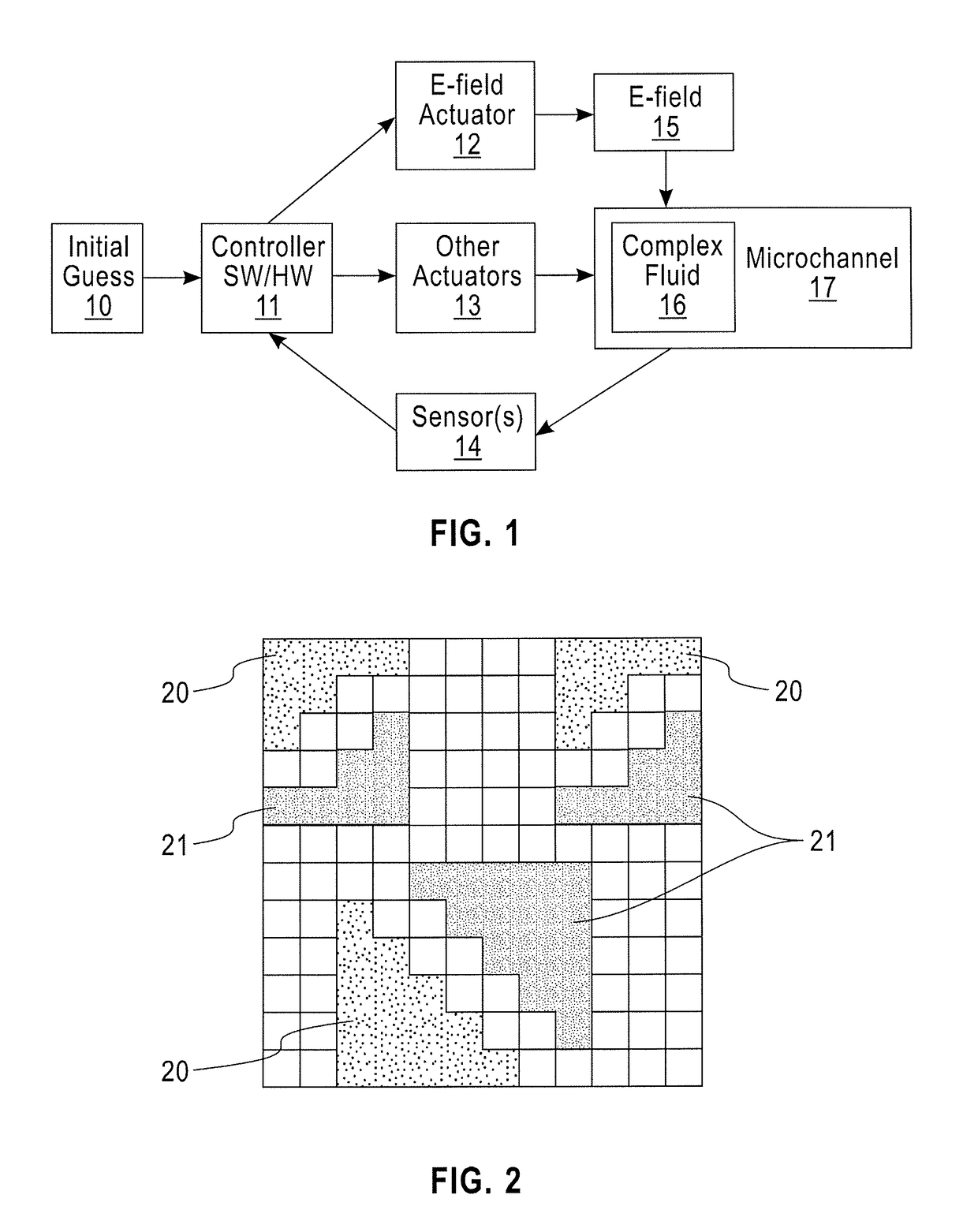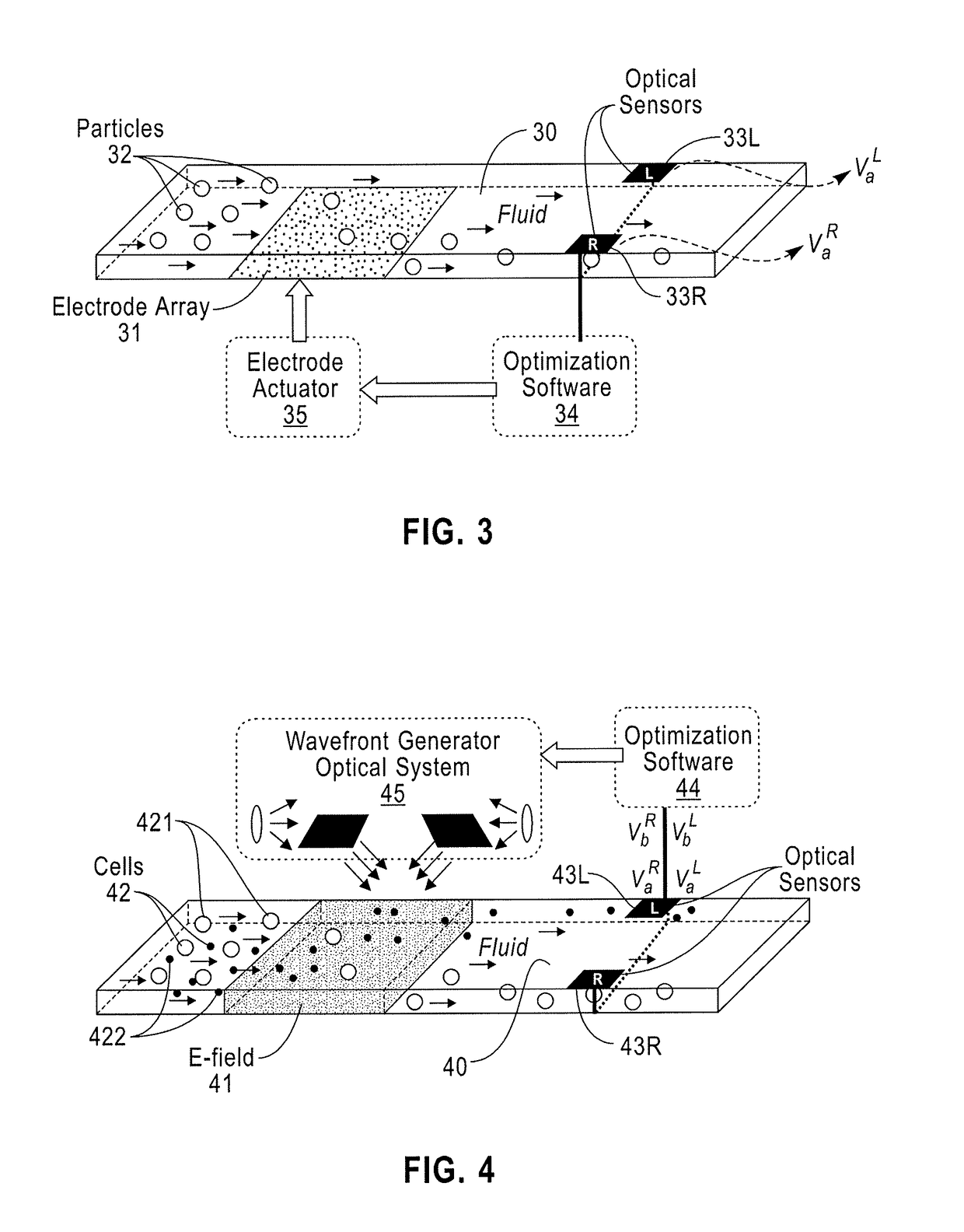Self-tuning system for manipulating complex fluids using electrokinectics
a technology of complex fluids and self-tuning, applied in fluid controllers, circuit elements, laboratory glassware, etc., can solve the problems of inflexibility, prone to failure, and inability to perform multiple applications,
- Summary
- Abstract
- Description
- Claims
- Application Information
AI Technical Summary
Benefits of technology
Problems solved by technology
Method used
Image
Examples
Embodiment Construction
[0050]Exemplary embodiments of the disclosure can provide a system for actively controlling or for optimizing in real time the electrical field landscape by using real data in an automated fashion. Embodiments of the disclosure can provide a method that allows for the automatic optimization of an electric field distribution based on data collected in real-time to manipulate particles / cells / droplets as they are carried by fluid flowing in a microchannel. Accordingly, while the disclosure is susceptible to various modifications and alternative forms, specific embodiments thereof are shown by way of example in the drawings and will herein be described in detail. It should be understood, however, that there is no intent to limit the disclosure to the particular forms disclosed, but on the contrary, the disclosure is to cover all modifications, equivalents, and alternatives falling within the spirit and scope of the disclosure.
[0051]A single device according to an embodiment of the discl...
PUM
 Login to View More
Login to View More Abstract
Description
Claims
Application Information
 Login to View More
Login to View More - R&D
- Intellectual Property
- Life Sciences
- Materials
- Tech Scout
- Unparalleled Data Quality
- Higher Quality Content
- 60% Fewer Hallucinations
Browse by: Latest US Patents, China's latest patents, Technical Efficacy Thesaurus, Application Domain, Technology Topic, Popular Technical Reports.
© 2025 PatSnap. All rights reserved.Legal|Privacy policy|Modern Slavery Act Transparency Statement|Sitemap|About US| Contact US: help@patsnap.com



